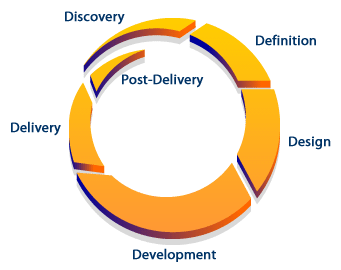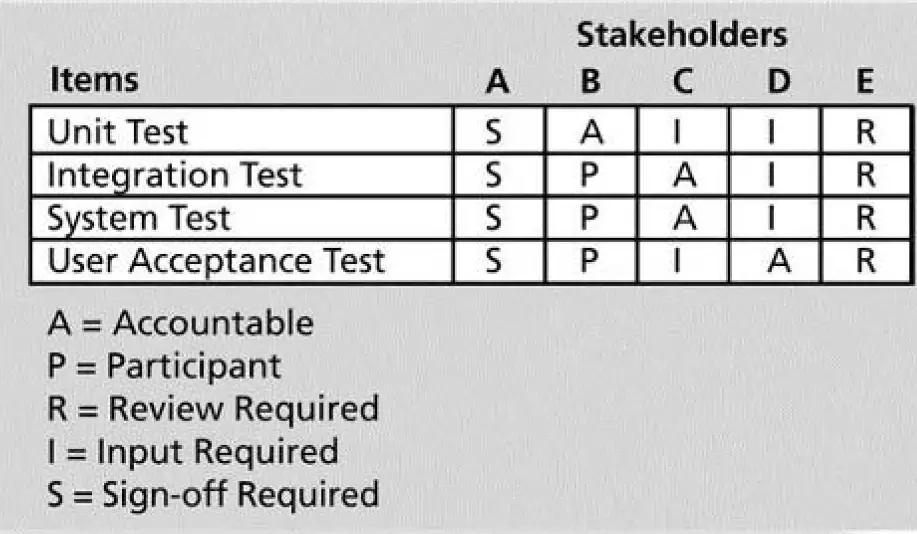Role of end Users during Six Phases of Development

Discovery
Audience identification, summarize demographic characteristics in RFP/Statement of Need
Definition
- Audience analysis; identify Web usage patterns
- Design: Testing and validation of signs and metaphors
- Development: Testing and validation of signs and metaphors
- Metrics: tracking and collection of usage statistics; targeted marketing campaign
- Post-Delivery: Analysis of metrics, adjustments as needed per audience usage, continuous update of content
Information Architecture
Roles and Responsibilities of End User:
Using the software at the end or after the implementation is an End User.
We do come across entire organisation management creation by an end user after the personnel structure is created.
Organisation management objects like creation of an organization unit means the functional area or department, creation job and position and its occupancy is with in the limits of an end user. Initially the organisation management is created by the consultant. In the course of time a new department has appeared in the company of the client.
This has to be created by the end user rather than depending upon the implementor. Similarly, a new job and position are always done by the end user. The entire work of organisation management purely depends upon the endurance of the software. From running periodical payroll and ensuring of the time schedules, work schedules of each employee is done through easy access by an end user.
This has to be created by the end user rather than depending upon the implementor. Similarly, a new job and position are always done by the end user. The entire work of organisation management purely depends upon the endurance of the software. From running periodical payroll and ensuring of the time schedules, work schedules of each employee is done through easy access by an end user.
Assigning Resources With a Responsibility Assignment Matrix
(RAM) = Responsibility Assignment Matrix.
There are many tools and techniques to assist in managing people on projects. One simple yet effective tool to help clarify roles and responsibilities is the responsibility assignment matrix (RAM). A responsibility assignment matrix (RAM) is a matrix that maps the work of the project as described in the WBS to the people responsible for performing the work as described in an organizational breakdown structure (OBS). The RAM allocates work to responsible and performing organizations, teams, or individuals, depending on the desired level of detail. For smaller projects, it would be best to assign individual people to WBS activities. For large projects, it is more effective to assign the work to organizational units or teams.
In addition to using a RAM to assign detailed work activities, project managers can also use a RAM to define general roles and responsibilities on projects. This type of RAM can include the stakeholders in the project.
Figure 3-10 provides a RAM that shows whether stakeholders are accountable or just participants in part of a project and whether they are required to provide input, review, or sign off on parts of a project. This simple tool can be an effective way for project managers to communicate roles and expectations of important stakeholders on projects.
There are many tools and techniques to assist in managing people on projects. One simple yet effective tool to help clarify roles and responsibilities is the responsibility assignment matrix (RAM). A responsibility assignment matrix (RAM) is a matrix that maps the work of the project as described in the WBS to the people responsible for performing the work as described in an organizational breakdown structure (OBS). The RAM allocates work to responsible and performing organizations, teams, or individuals, depending on the desired level of detail. For smaller projects, it would be best to assign individual people to WBS activities. For large projects, it is more effective to assign the work to organizational units or teams.
In addition to using a RAM to assign detailed work activities, project managers can also use a RAM to define general roles and responsibilities on projects. This type of RAM can include the stakeholders in the project.
Figure 3-10 provides a RAM that shows whether stakeholders are accountable or just participants in part of a project and whether they are required to provide input, review, or sign off on parts of a project. This simple tool can be an effective way for project managers to communicate roles and expectations of important stakeholders on projects.
